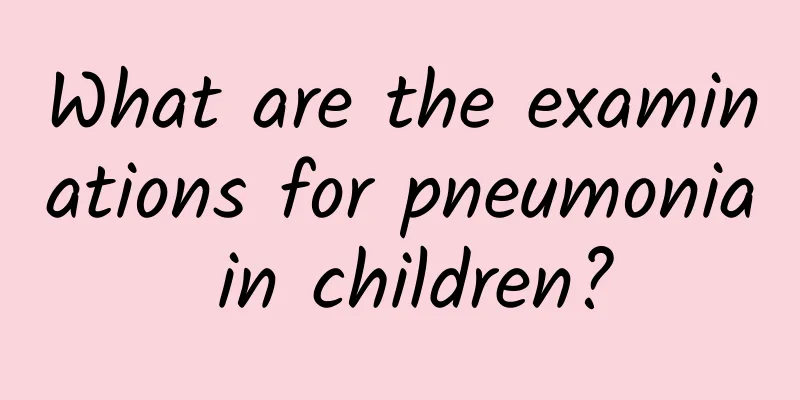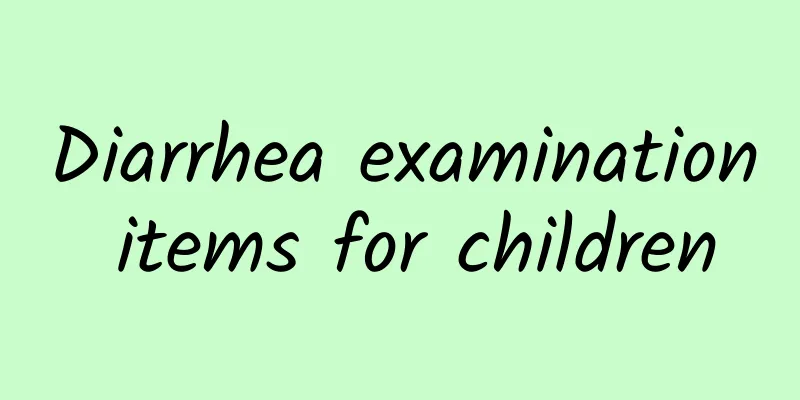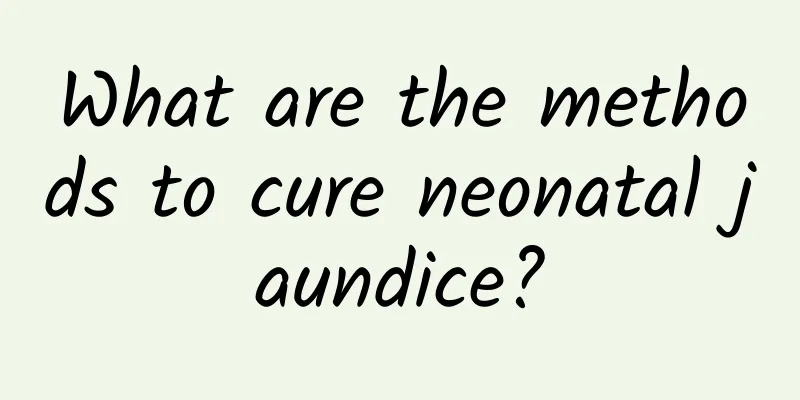Types of neonatal jaundice Why is jaundice in children not treated?

|
1. Physiological jaundice Usually, the skin of a newborn baby is a little yellow, which can be seen with the naked eye 2 days after birth. The yellowing reaches its peak at 3-5 days and will mostly disappear at 7-10 days. At this time, the jaundice index (serum bilirubin value) is generally within the normal range of no more than 15 mg/dL. 2. Pathological jaundice There are many causes of pathological jaundice, including neonatal infection, sepsis, hemolysis, genetics, biliary atresia, breast milk and other factors. Once pathological jaundice occurs, the baby's skin color will darken rapidly in a short period of time and last for a long time. The baby may even be accompanied by anemia, abnormal body temperature, drowsiness, weak sucking, vomiting, abnormal urine and stool color, refusal to eat, and even groaning and crying. This indicates that jaundice may have invaded the brain nerve center. The standards for full-term babies and premature babies are different. Mothers should send their babies to the hospital for observation as long as they find the following conditions: (1) When jaundice is detected in a newborn within 24 hours of birth, it is called “early-onset jaundice”. (2) The jaundice index rises too high all of a sudden, increasing by more than 5 mg/dL a day. This is a common symptom of hemolytic jaundice (the blood types of the mother and baby are incompatible). (3) The jaundice index is too high, reaching 15 mg/dL. (4) It lasts too long. Physiological jaundice generally lasts for 7-10 days. If it lasts for more than 2 weeks, you should pay attention. Parents should closely observe the occurrence of jaundice in the newborn within 1-2 weeks after birth. When observing, the newborn must be placed under natural light. If the skin is orange-yellow, the white of the eyeballs, the limbs, palms, and soles have turned yellow, the urine is dark yellow and can stain the diaper yellow, and the stool is light or even white, it means that the jaundice has exceeded the range of physiological jaundice and the newborn should be taken to the hospital for diagnosis and treatment immediately. Treatment of jaundice in children For physiological jaundice, you can try the following methods. 1. Drink boiled water The baby must be fed 30ml of boiled water every morning and evening, and should drink an appropriate amount of water during the day, so that the baby can expel jaundice as soon as possible. If the baby is drinking formula milk, water should be added. 2. Drink glucose When you find that the neonatal jaundice index is high, give the child some glucose water. Add glucose to water and feed it to the child. This is an effective way to remove jaundice. 3. Sunbathing Around 10 o'clock every morning, when the sun is not very strong, let your child bask in the sun, trying to expose the child's skin as much as possible, but avoid exposing the eyes. 4. Stop breastfeeding. If the above methods do not work, then stop breastfeeding for 2-3 days. Because the cause of high jaundice may be breast milk, the jaundice index will drop after stopping breastfeeding. Pathological jaundice 1. Etiological treatment The cause of pathological jaundice should be identified and eliminated in a targeted manner. 2. Drug treatment (1) Enzyme inducers: 4-8 mg/kg of phenobarbital per day. Side effects include drowsiness and slow sucking. (2) Glucocorticoids: Prednisone 1-2 mg/kg daily or dexamethasone 0.3-0.5 mg/kg daily can be used, but they should be used with caution depending on the cause of jaundice. 3. Phototherapy Phototherapy can be used for any elevated indirect bilirubin caused by various reasons. It is generally used when the total serum bilirubin reaches 205.2-256.5μmol/L (12-15mg/dl) or above. If maternal-fetal blood type incompatibility hemolytic disease has been confirmed, phototherapy can be used once jaundice occurs. When using phototherapy, be careful: (1) The temperature of the phototherapy box should be maintained at around 30°C and the humidity should be 60%. (2) The baby should be naked, with black paper to protect the eyes and cover the testicles. The exposure should continue except for feeding and nursing operations. (3) Regularly measure its function with a blue light radiation meter. The most effective spectrum wavelength is 427-475nm blue light. The light source is 50cm away from the baby, and the total wattage is 160-320W. The side effects of phototherapy include fever, diarrhea, rash, riboflavin deficiency, thrombocytopenia, bronze syndrome, etc., which can recover on their own after stopping phototherapy. |
<<: How to breastfeed your baby with jaundice
>>: Why does neonatal jaundice cause sepsis?
Recommend
How is pneumonia diagnosed in children?
There are many pneumonia patients in life. People...
Does one whooping cough infection give you lifelong immunity?
Having whooping cough once does not provide lifel...
Is it good to drink milk before going to bed? What are the benefits of drinking milk before going to bed?
Many people think that drinking milk before going...
What to do if your child coughs and has phlegm
Every time when the seasons change, we often hear...
How harmful is pathological jaundice to newborns?
Pathological jaundice can be very harmful to newb...
How to treat hand, foot and mouth disease in one-year-old babies
Hand, foot and mouth disease in one-year-old infa...
What should I do if my baby has a cough? What are the dietary treatments for my baby's cough?
When babies have coughs, their mental state will ...
What to do if your baby has eczema on his face? What are the treatments for eczema on your baby's face?
When eczema appears on the baby's face, the m...
Will the seizure recur after recovery?
Will there be a relapse after the seizure is cure...
What are the symptoms of viral cold in babies? 3 ways to care for viral cold in babies
Viral colds are usually upper respiratory tract i...
What should I do if my child has recurrent mumps? What should I do if my child has oral ulcers?
Mumps and oral ulcers are more common diseases in...
How do patients with breast milk diarrhea choose to undergo relevant examinations?
How do patients with breast milk diarrhea choose ...
What are the causes of diarrhea in children? What factors can cause diarrhea in infants and young children?
In summer, many children are prone to diarrhea. T...
What medicine can cure pneumonia and bronchitis in children quickly?
Children with pneumonia and bronchitis usually ne...
What to do if your two-month-old baby coughs
There are many reasons that can cause a baby to c...









